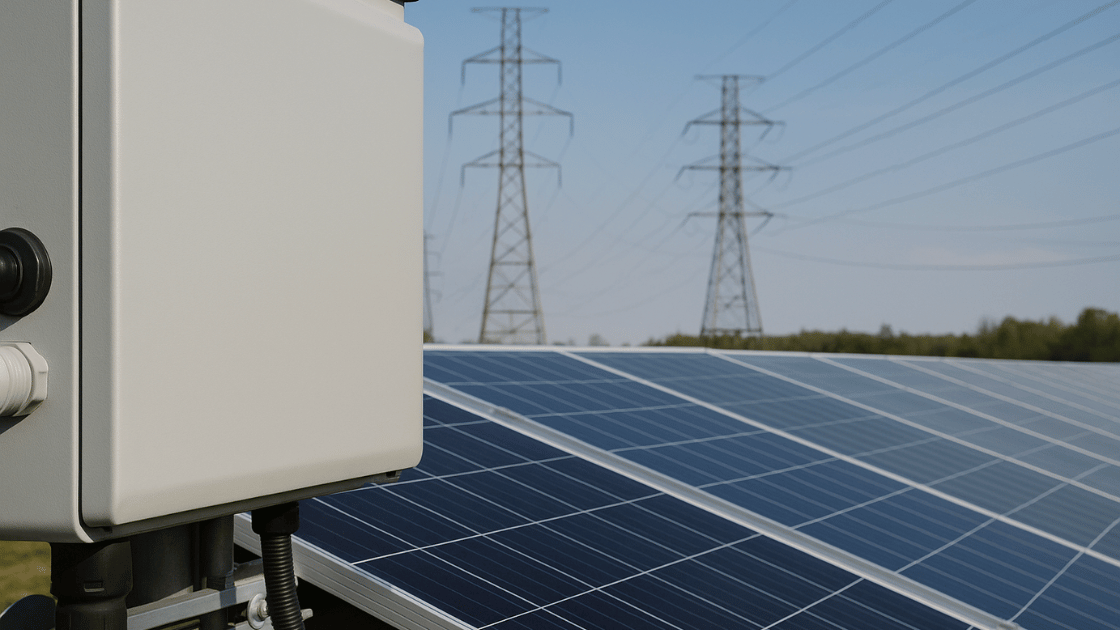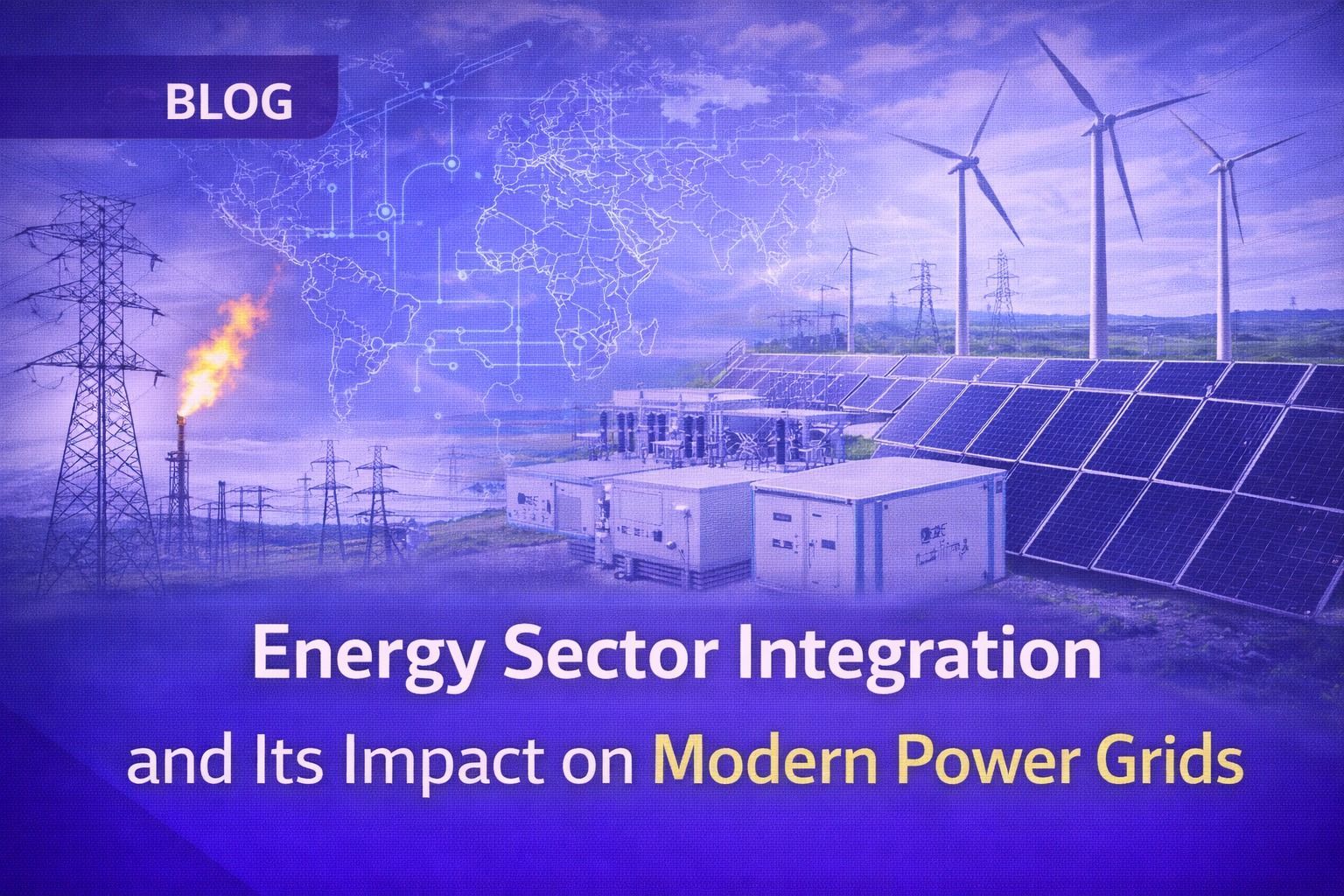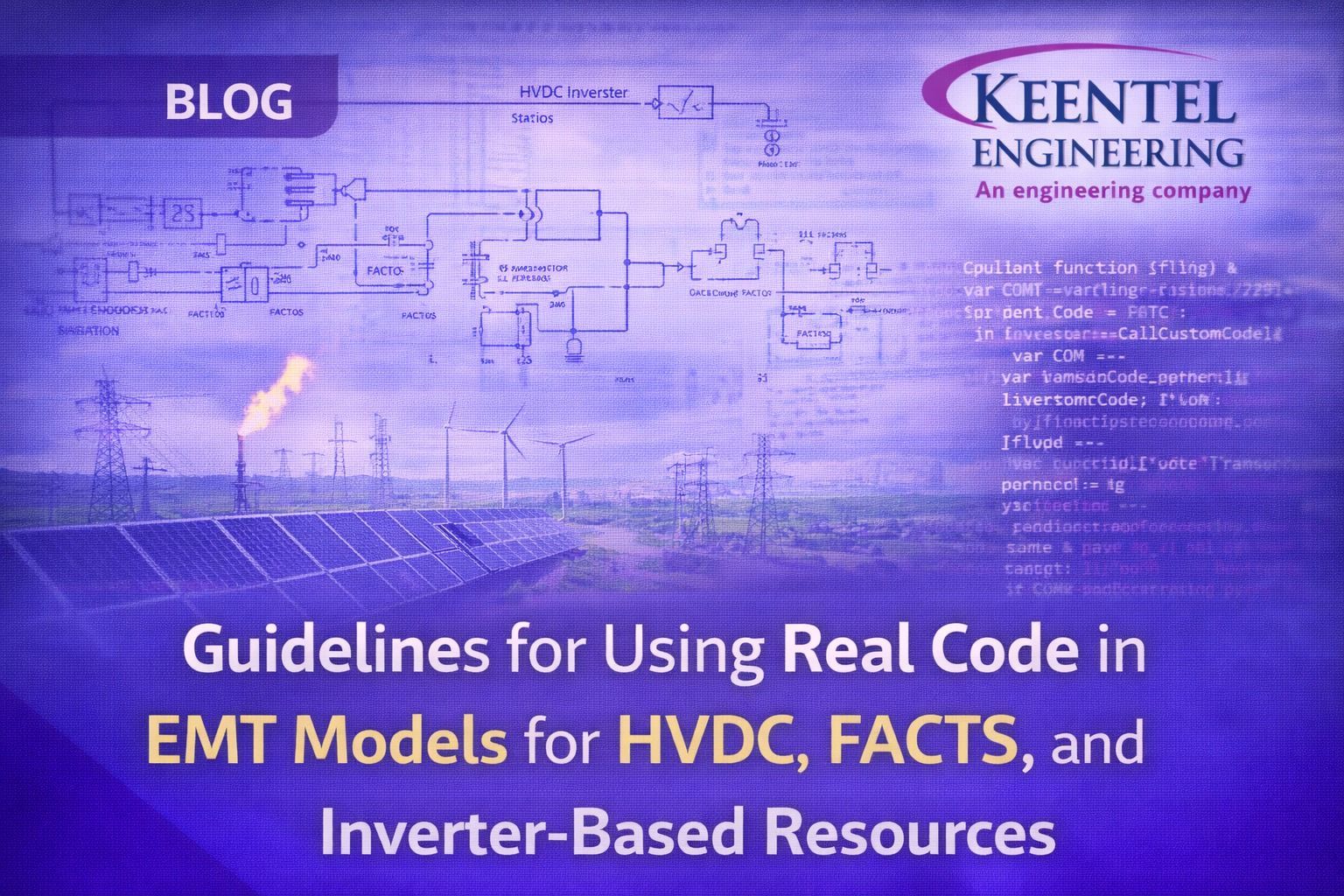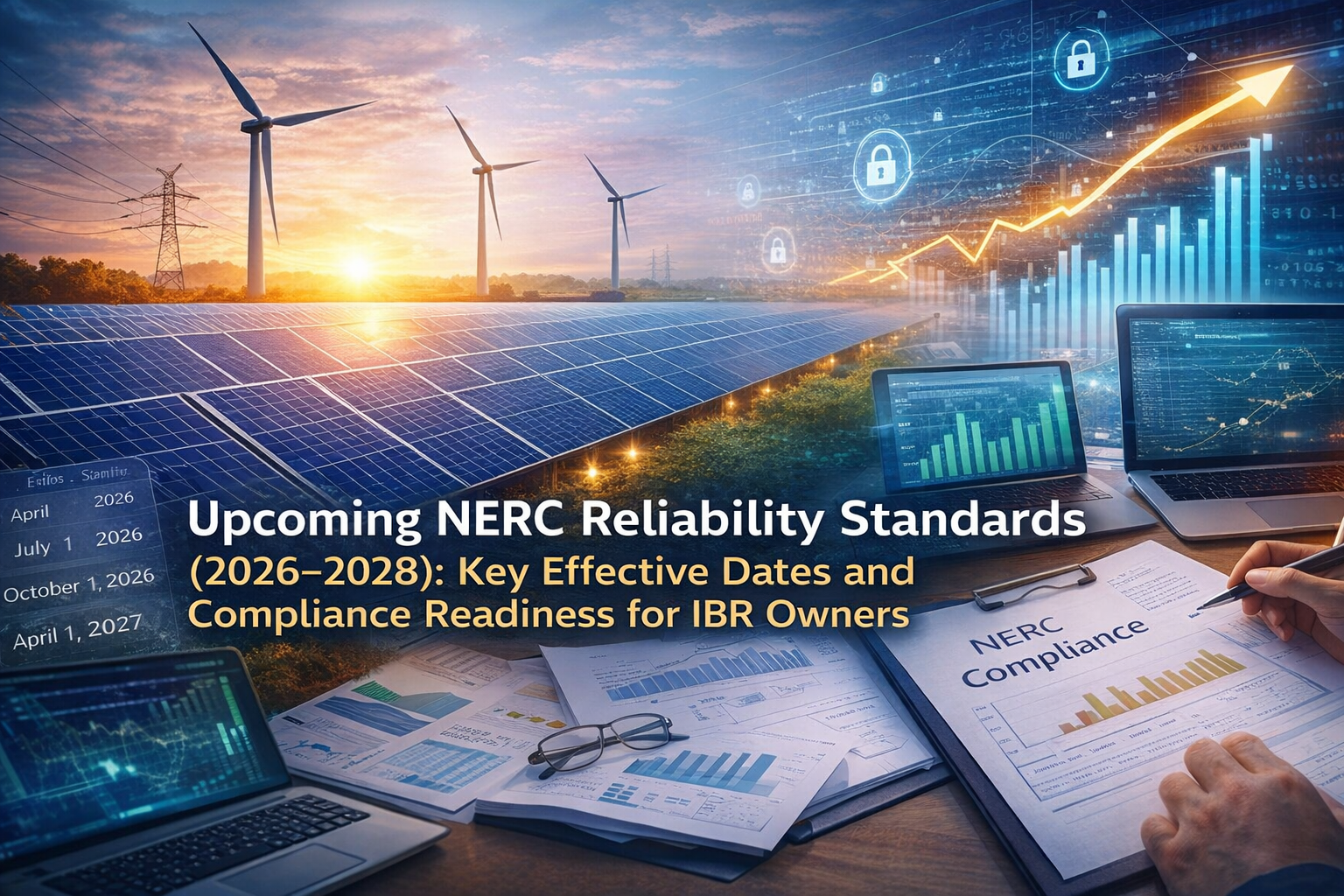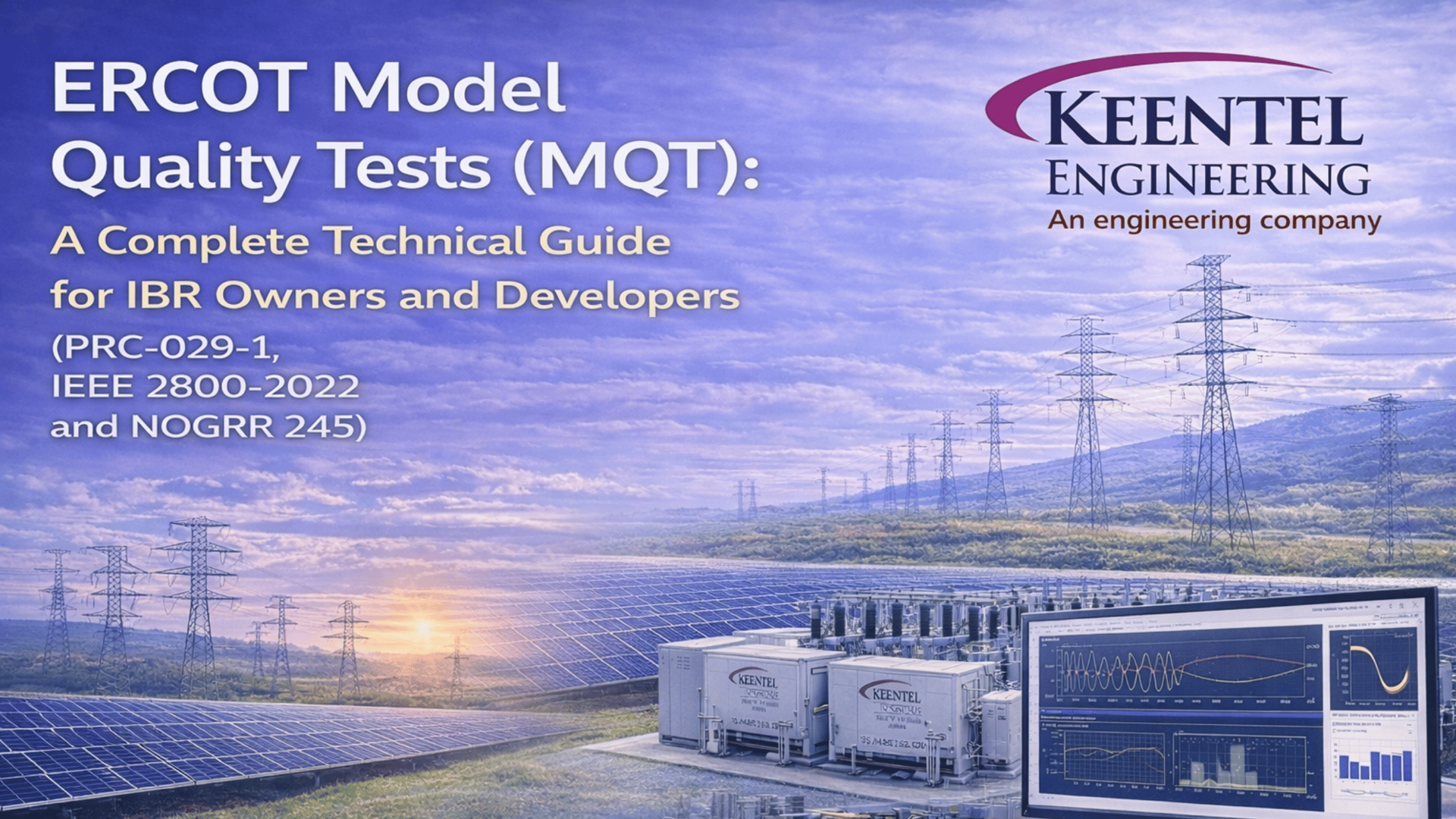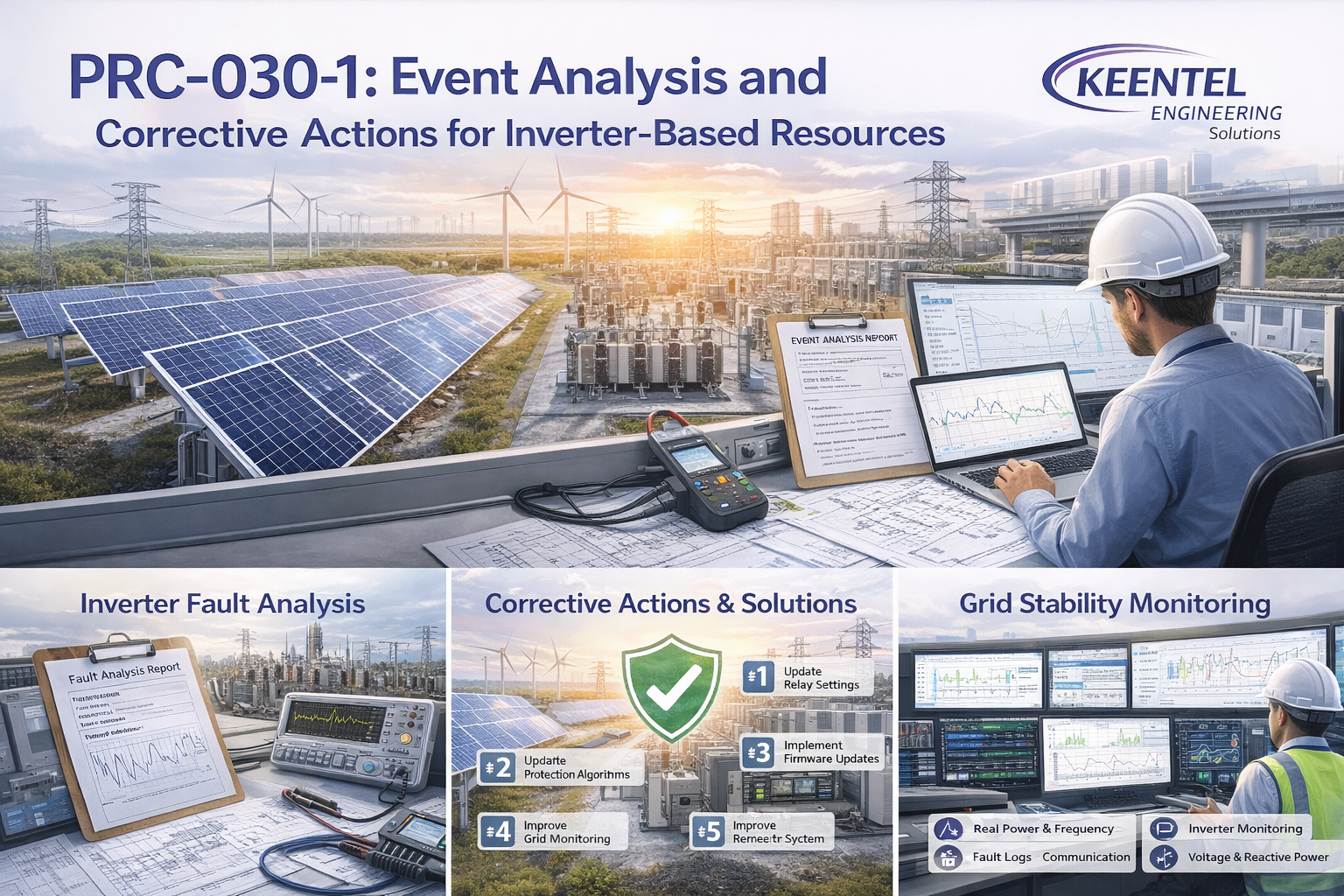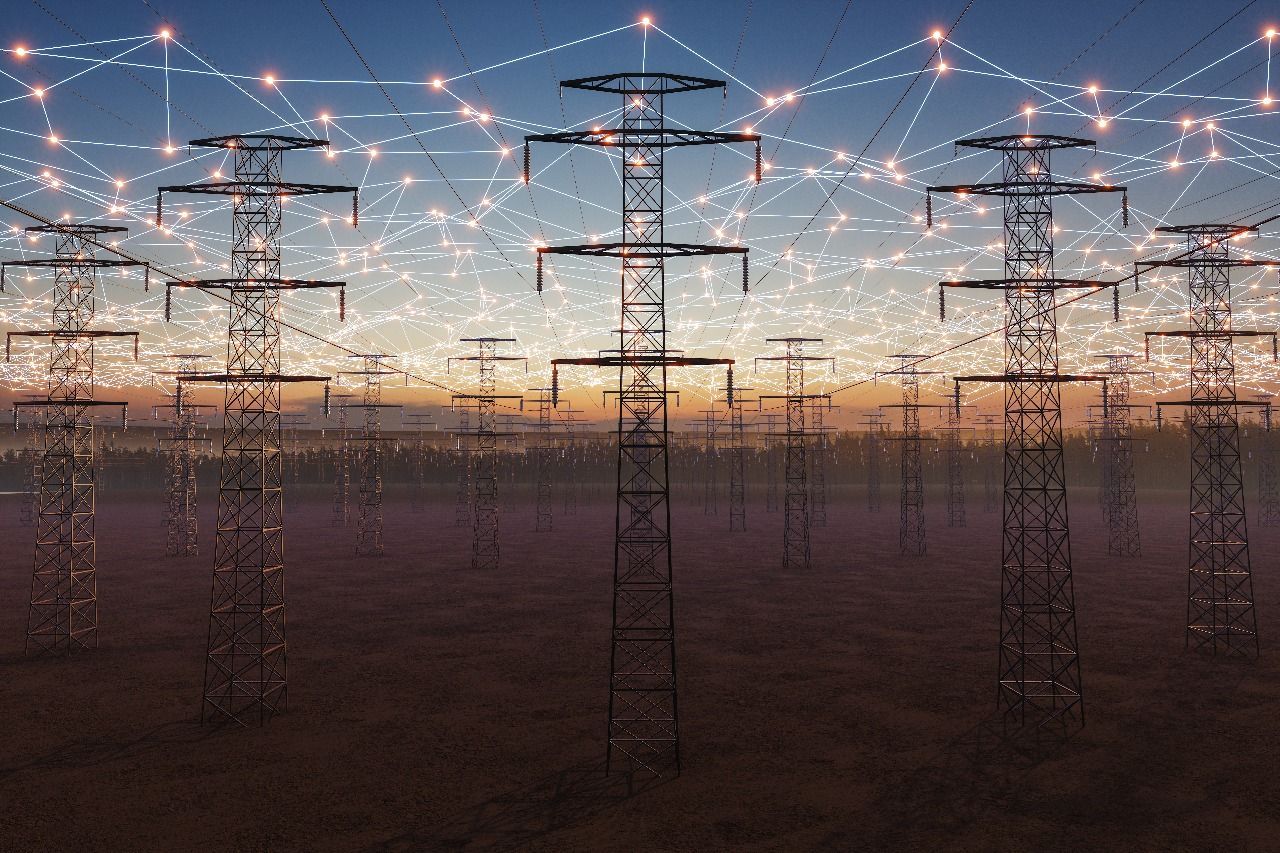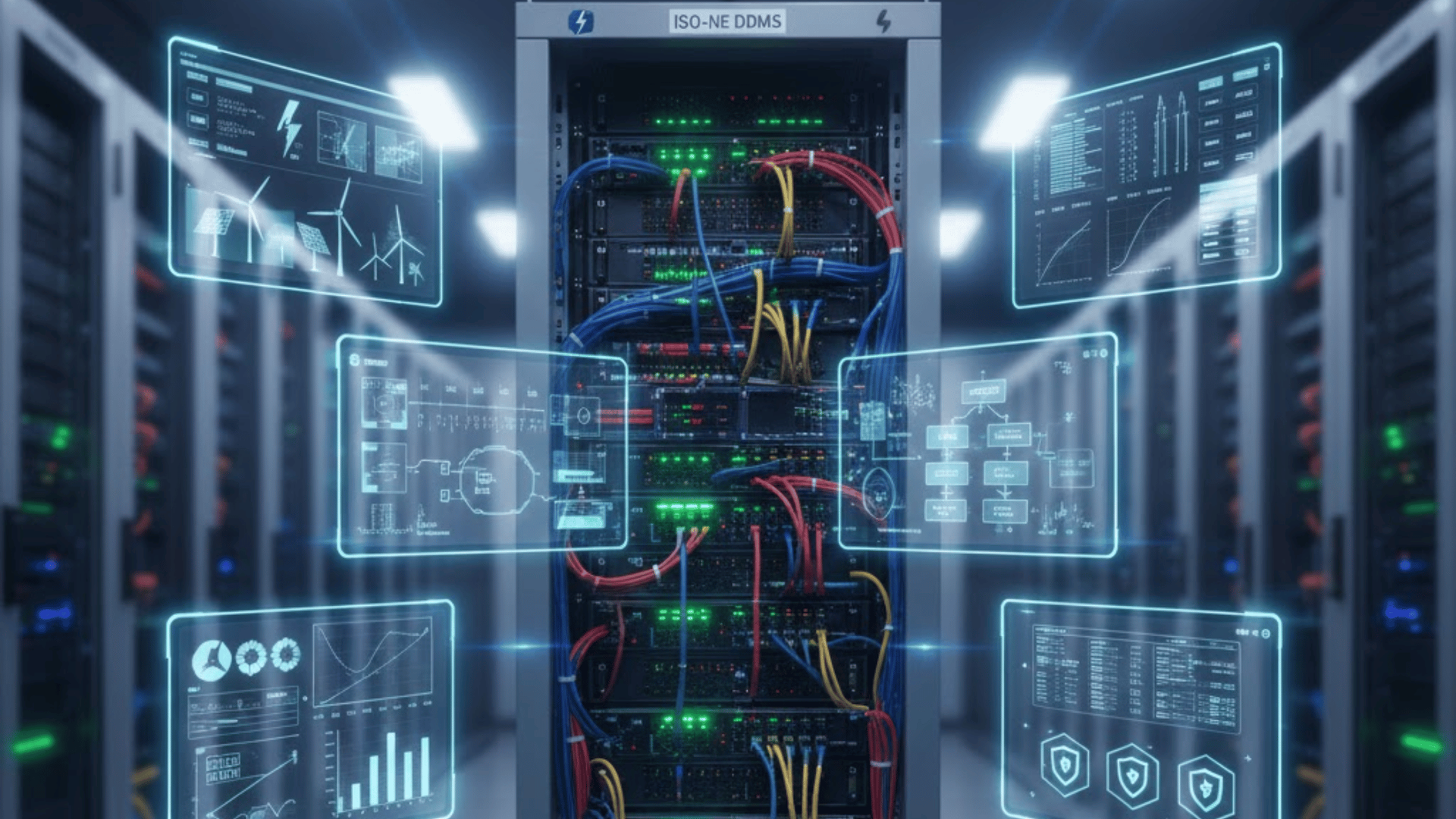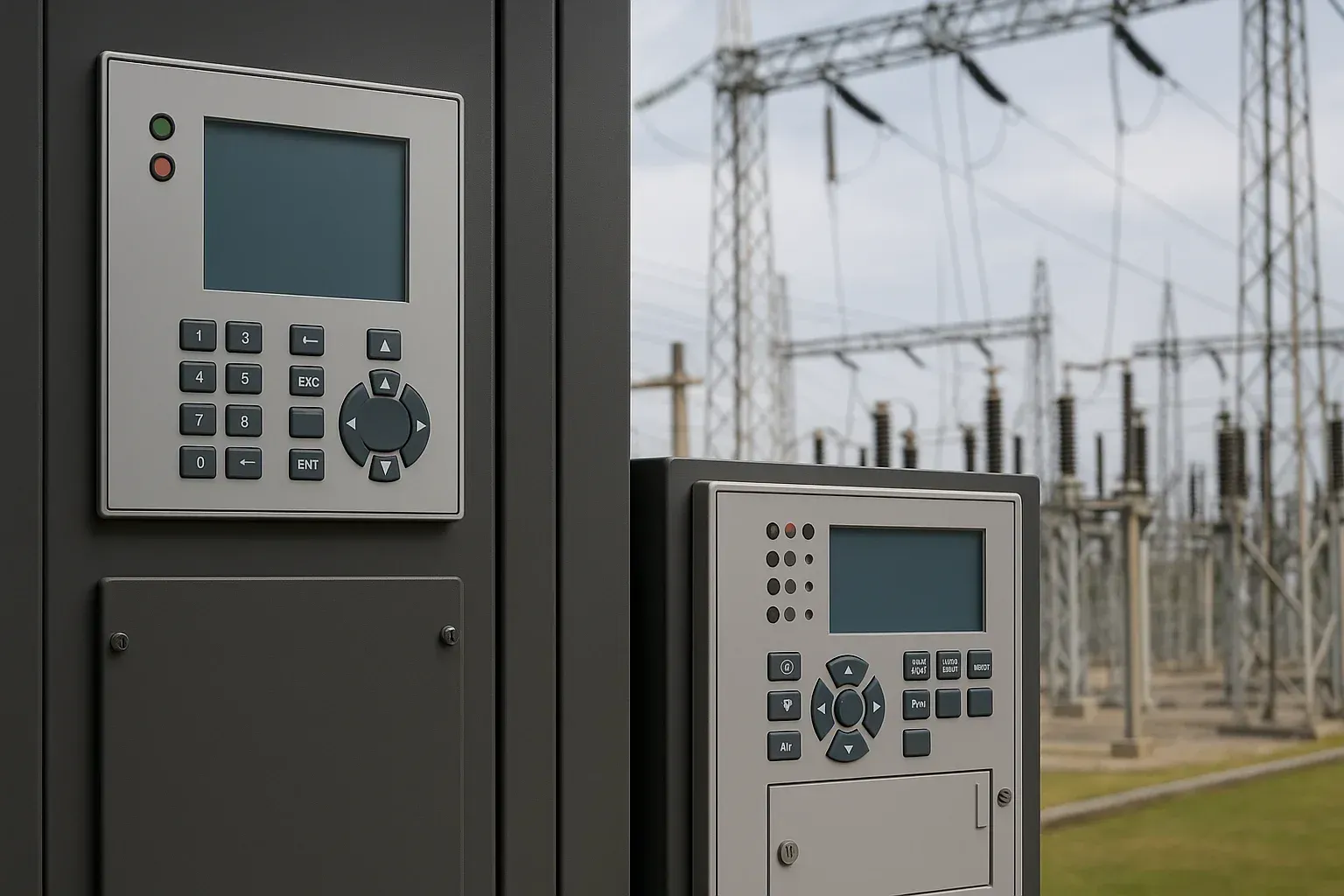A Coordinated Electric System Interconnection Review—the utility’s deep-dive on technical and cost impacts of your project.
Challenge: Frequent false tripping using conventional electromechanical relays
Solution: SEL-487E integration with multi-terminal differential protection and dynamic inrush restraint
Result: 90% reduction in false trips, saving over $250,000 in downtime
Unlocking IEEE 1547-2018: Interconnection & Interoperability Standards for DERs
July 24, 2025 | Blog
Introduction
The modern power grid is evolving rapidly due to the widespread adoption of Distributed Energy Resources (DERs) such as solar PV, wind turbines, battery storage systems, and combined heat and power (CHP) units. Central to this transformation is IEEE Std 1547-2018—a critical standard that defines how DERs interconnect and communicate with the grid safely and reliably.
This blog provides a deep dive into the key components of IEEE 1547-2018, including interconnection rules, ride-through capabilities, interoperability protocols, performance categories, and cybersecurity expectations. Whether you’re a utility engineer, DER developer, inverter OEM, or compliance specialist, understanding this standard is essential for navigating today’s grid-interactive energy landscape.
Overview of IEEE 1547-2018
IEEE 1547-2018 replaces the original 2003 edition with an expanded and future-ready framework, addressing the evolving needs of modern power systems with high Distributed Energy Resources (DER) integration.
It introduces critical updates to:
- Mandatory performance criteria for DER grid interconnection
- Testing and compliance verification requirements
- Communication and interoperability protocols
- Voltage and frequency ride-through (V/FRT) performance
- Abnormal operating condition response
Unlike its predecessor, the 2018 revision actively supports advanced grid functions—such as voltage regulation and frequency response—that are essential for maintaining grid reliability as DER penetration increases.
Explore related insights on
Power System Studies
for grid impact modeling.
Scope and Applicability
IEEE 1547-2018 applies to interconnection systems rated up to 10 MVA at the Point of Common Coupling (PCC) with an Area Electric Power System (Area EPS). It is technology-agnostic, applying to all major DER technologies including inverters, synchronous generators, and induction-based systems.
Key areas of applicability include:
- Local (individual) DER interfaces
- Aggregated DER systems
- Parallel operation with utility service
The standard ensures consistent treatment of all DER types within utility interconnection frameworks.
Key Interconnection Requirements
A. Voltage Regulation Support
All DERs must be equipped with the ability to regulate voltage at the PCC using one or more of the following methods:
- Constant Power Factor
- Volt-VAR Control (voltage-reactive power)
- Volt-Watt Control (voltage-active power)
These functionalities can be enabled or disabled based on utility requirements and regional grid codes.
B. Frequency Regulation
DERs are required to adjust power output in response to over-frequency and under-frequency conditions. This frequency responsiveness is critical in preventing cascading failures during widespread system disturbances.
Ride-Through Capabilities
One of the most substantial advancements in IEEE 1547-2018 is the detailed requirement for ride-through performance during voltage and frequency events.
A. Voltage Ride-Through (VRT)
DERs must remain operational during short-duration voltage sags or swells rather than disconnecting, helping stabilize the local grid during minor faults or disturbances.
B. Frequency Ride-Through (FRT)
DERs must also ride through defined frequency deviations and, depending on their classification (typically Category II or III), may provide support to help restore frequency stability.
Learn more about
Relay Performance and NERC PRC Compliance for protective coordination with DERs.
Figure 1 (Page 43) of the standard visually outlines minimum and maximum VRT thresholds and allowable clearing times under different grid scenarios.
Power Quality Standards
To safeguard local grid stability, IEEE 1547-2018 sets clear performance benchmarks for power quality compliance. All Distributed Energy Resources (DERs) must meet the following criteria:
- Harmonics: Must comply with IEEE 519 total harmonic distortion limits to avoid waveform distortion.
- DC Injection: Direct current injection must remain under 0.5% of rated output to prevent transformer saturation and protection misoperation.
- Flicker:
DERs should not cause perceptible voltage flicker, ensuring user equipment performance is not disrupted.
Maintaining high power quality is essential for seamless DER integration into the distribution grid.
Categories of Interconnection
IEEE 1547-2018 introduces a categorization system for DER capabilities based on their performance in key areas like ride-through, frequency support, and reactive power contribution:
| Category | Frequency Response | Ride-Through Capability | Reactive Power Support |
|---|---|---|---|
| I | Basic | Minimal | None |
| II | Intermediate | Full | Required |
| III | Advanced | Full | Required |
These categories allow utilities to tailor interconnection requirements based on local system needs, resource mix, and reliability goals.
See how
Owner’s Engineer Services can help utilities and developers plan for grid-interactive DER interconnections.
Testing and Verification
IEEE 1547-2018 mandates rigorous testing to validate DER compliance and functionality:
- Type Testing: Performed by manufacturers in lab conditions to verify baseline conformance.
- Field Verification: Conducted onsite to confirm DER settings and operational limits are correctly applied.
- Commissioning Tests: Completed before grid connection to ensure safe and coordinated integration.
Annex H of the standard outlines protocols for waveform analysis, anti-islanding tests, and verification of ride-through and power quality features.
Communications and Interoperability
To support modern grid interaction, Annex B of IEEE 1547-2018 establishes interoperability requirements for DERs, including:
- Standardized communication protocols like Modbus, DNP3, IEEE 2030.5, and SunSpec.
- Remote monitoring, diagnostics, and control capabilities to facilitate aggregator and utility access.
- Secure communication layers with configurable and authenticated access.
These features enable integration into DER Management Systems (DERMS) and future-ready smart grid platforms, allowing scalable, reliable coordination of DER fleets.
Abnormal Operating Conditions
Under IEEE 1547-2018, Distributed Energy Resources (DERs) must safely handle abnormal operating conditions to avoid grid instability:
- Cease to energize in the event of unintentional islanding, preventing DERs from feeding power into isolated grid segments.
- Detect and react to abnormal voltage or frequency excursions beyond the defined ride-through thresholds.
- Resume operation using anti-islanding logic and randomized reconnection timers to avoid synchronized inrushes and oscillations.
These controls ensure DERs respond in a manner that supports grid reliability and safety even under stress conditions.
Intentional and Unintentional Islanding
Islanding scenarios—when a DER continues to power a location disconnected from the main grid—pose a risk to both equipment and personnel. IEEE 1547-2018 distinguishes between:
Unintentional islanding: DERs must detect and immediately disconnect to avoid energizing the grid unintentionally. Verification involves:
- Open circuit tests
- Load rejection tests
- Non-detection zone (NDZ) analysis
Intentional islanding: Permitted only under pre-approved, controlled conditions with added protections and system coordination.
Cybersecurity Considerations
Although IEEE 1547-2018 does not prescribe detailed cybersecurity protocols, it underlines essential security principles for DER communications:
- Secure and authenticated access to DER settings and monitoring systems.
- Audit trails to log remote configuration changes and detect unauthorized access.
- Defense-in-depth architecture, including firewalls, encryption, and segmentation.
These recommendations align with broader NERC CIP and IEC 62443 standards, supporting DER compliance in a digital, interconnected grid.
Coordination with UL 1741 SB
UL 1741 Supplement B (SB) complements IEEE 1547-2018 by establishing the testing framework used to certify DER compliance. It defines detailed evaluation methods for:
- Ride-through performance under voltage and frequency disturbances
- Frequency and voltage response capabilities
- Interoperability and communications validation
Compliance with UL 1741 SB is required for interconnection in several jurisdictions, especially where smart inverters must demonstrate conformance with Category II or III requirements.
Regulatory and Policy Adoption
Adoption of IEEE 1547-2018 is accelerating across the U.S., with state regulators and Independent System Operators (ISOs) like California (Rule 21), Hawaii, New York, and CAISO and PJM mandating or transitioning to this standard as the baseline for DER interconnection.
It also plays a pivotal role in shaping federal policy under FERC Order 2222, which promotes DER aggregation in wholesale markets. These regulatory frameworks increasingly rely on the technical consistency and grid-support functions defined in IEEE 1547-2018.
Learn how our
POI Interconnection Engineering Support helps ensure compliance with IEEE 1547 and utility-specific requirements.
Practical Challenges in Implementation
While IEEE 1547-2018 modernizes interconnection practices, its implementation presents real-world challenges:
- Legacy inverter upgrades may be required to meet ride-through and communication standards.
- Utility personnel must receive updated training and policy alignment for consistent enforcement.
- Power system studies must now model DERs with advanced control capabilities.
- Manufacturers, developers, and utilities need tighter coordination during design, commissioning, and testing.
Successful implementation depends on industry-wide collaboration and standardization across hardware, software, and operational protocols.
Future Outlook
IEEE 1547-2018 is not just a compliance benchmark—it is the foundation for next-generation grid innovation. Its long-term impact includes:
- Real-time DER orchestration in grid operations
- Deployment of grid-forming inverters for microgrid and blackout recovery
- Expansion of microgrid participation in resilience planning
- Integration of AI and predictive control systems for DERs
As the grid shifts toward decarbonization and decentralization, IEEE 1547 will underpin the intelligent control and reliable operation of renewable-powered systems.
Conclusion
IEEE Std 1547-2018 marks a transformative milestone in DER interconnection standards. It harmonizes technical performance, communications, cybersecurity, and ride-through protocols, helping utilities and developers integrate clean energy resources without compromising grid reliability or safety.
Whether you're a DER manufacturer, utility planner, power system consultant, or compliance specialist, mastering the IEEE 1547-2018 standard is essential for success in today’s evolving energy landscape.
FAQs on IEEE 1547-2018 Distributed Energy Resource Interconnection
1. What is IEEE 1547-2018?
It is a comprehensive standard that defines the technical and interoperability requirements for interconnecting Distributed Energy Resources (DERs) with Area Electric Power Systems (EPS). It covers performance metrics, ride-through capabilities, communications, testing, and safety.
2. What types of DERs fall under IEEE 1547-2018?
It applies to all DERs up to 10 MVA, including solar PV, wind turbines, CHP systems, battery storage, and hybrid solutions.
3. What are the IEEE 1547-2018 performance categories?
The standard introduces three categories:
- Category I: Basic performance
- Category II: Intermediate ride-through and reactive power support
- Category III: Advanced performance with full ride-through and grid support
4. Is voltage regulation required?
Yes, DERs must have voltage regulation capabilities such as Volt-VAR or Volt-Watt, but utility operators determine whether to enable them.
5. What is Volt-VAR control?
A reactive power function that adjusts VAR output based on voltage levels at the Point of Common Coupling (PCC) to support grid voltage stability.
6. What is frequency-watt control?
It reduces active power when grid frequency exceeds limits, helping maintain frequency stability during disturbances.
7. Does IEEE 1547-2018 require anti-islanding detection?
Yes. DERs must detect and cease to energize in the event of unintentional islanding, ensuring safety and grid integrity.
8. What is voltage ride-through (VRT)?
DERs must remain connected during brief voltage sags or swells, based on predefined IEEE ride-through curves.
9. What is frequency ride-through (FRT)?
DERs should continue operating during temporary frequency deviations, supporting grid stability during high-stress events.
10. What are interoperability requirements?
The standard requires remote configuration, secure monitoring, and support for common protocols like IEEE 2030.5, Modbus, SunSpec, and others.
11. Is cybersecurity addressed in IEEE 1547-2018?
Yes. While not specifying full protocols, the standard mandates secure access, audit trails, and references NERC CIP and IEC 62443 for guidance.
12. What is UL 1741 SB and how is it related?
UL 1741 SB is the certification standard that ensures DERs meet the ride-through and communication requirements of IEEE 1547-2018.
13. Can DER settings be changed remotely?
Yes. Settings can be reconfigured remotely with authenticated, secure access and proper change logs.
14. What is anti-islanding protection?
A safety feature ensuring DERs disconnect automatically when they detect a loss of grid, preventing unsafe island conditions.
15. How is IEEE 1547 compliance verified?
Through:
- Type testing (lab-based)
- Field verification (on-site)
- Commissioning tests before energization
- (Refer to Annex H for detailed testing procedures.)
16. Does the standard apply to microgrids?
Yes, it governs grid-connected DERs within microgrids, but not standalone islanded operation unless reconnecting to the grid.
17. Are harmonic limits defined?
Yes. DERs must comply with IEEE 519 harmonic distortion limits to avoid degrading local power quality.
18. What is Volt-Watt control?
A feature that reduces active power output when voltage rises above a threshold, protecting against overvoltage conditions.
19. What testing is required for ride-through?
Ride-through tests must validate:
- Voltage and frequency excursions
- Clearing times
- Waveform accuracy
These are defined in Annex H of the standard.
20. How does IEEE 1547-2018 support DER aggregators?
Through standardized communication protocols and remote configurability, enabling participation in DERMS and virtual power plants.
21. Can legacy inverters be upgraded to meet IEEE 1547-2018?
Some may qualify through firmware upgrades, but hardware limitations may prevent full compliance in many older models.
22. What happens after an abnormal condition clears?
DERs must reconnect to the grid with a random delay to prevent mass reclosure surges that could destabilize the system.
23. What communication protocols are supported?
IEEE 1547-2018 supports:
- IEEE 2030.5
- Modbus
- DNP3
- SunSpec
and others, depending on system architecture and utility preference.
24. Is IEEE 1547-2018 harmonized with grid codes?
Yes. It aligns with:
- California Rule 21
- Hawaii PUC requirements
- FERC Order 2222
- NERC standards
25. How often must DER settings be reviewed?
Utilities may require periodic audits or revalidation, especially for systems with remote reprogrammable controls.
Need Expert Support with IEEE 1547-2018 Compliance?
Partner with experts who understand the grid of the future.
Contact us today to ensure your DER systems meet every technical and regulatory requirement.

About the Author:
Sonny Patel P.E. EC
IEEE Senior Member
In 1995, Sandip (Sonny) R. Patel earned his Electrical Engineering degree from the University of Illinois, specializing in Electrical Engineering . But degrees don’t build legacies—action does. For three decades, he’s been shaping the future of engineering, not just as a licensed Professional Engineer across multiple states (Florida, California, New York, West Virginia, and Minnesota), but as a doer. A builder. A leader. Not just an engineer. A Licensed Electrical Contractor in Florida with an Unlimited EC license. Not just an executive. The founder and CEO of KEENTEL LLC—where expertise meets execution. Three decades. Multiple states. Endless impact.
Services

Let's Discuss Your Project
Let's book a call to discuss your electrical engineering project that we can help you with.

About the Author:
Sonny Patel P.E. EC
IEEE Senior Member
In 1995, Sandip (Sonny) R. Patel earned his Electrical Engineering degree from the University of Illinois, specializing in Electrical Engineering . But degrees don’t build legacies—action does. For three decades, he’s been shaping the future of engineering, not just as a licensed Professional Engineer across multiple states (Florida, California, New York, West Virginia, and Minnesota), but as a doer. A builder. A leader. Not just an engineer. A Licensed Electrical Contractor in Florida with an Unlimited EC license. Not just an executive. The founder and CEO of KEENTEL LLC—where expertise meets execution. Three decades. Multiple states. Endless impact.
Leave a Comment
We will get back to you as soon as possible.
Please try again later.

